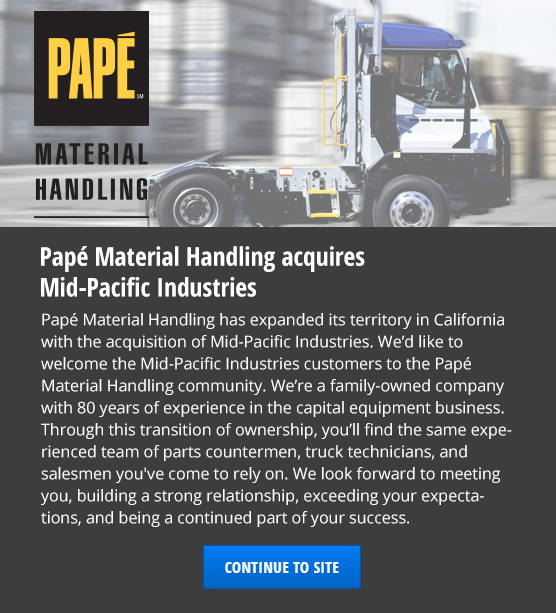As a warehouse manager, you know that your forklifts are some of the most important vehicles for your operation. How can you avoid unnecessary costs and replacements, making sure your forklifts are running in tip-top shape? Review our forklift maintenance checklist to be sure you and your daily operators are doing everything you can to extend the life and condition of your equipment (all while ensuring the safety of your operation!).
Before Each Shift
Daily checks are critical for catching issues early and preventing costly repairs. OSHA recommends performing the following inspections before each shift. If any issues are identified, have your forklift serviced by a qualified technician promptly.
Engine-Off Checks
- Leaks: Inspect for hydraulic oil, engine oil, radiator coolant, or fuel leaks.
- Tires: Check tire pressure and condition.
- Forks & Load Backrest: Assess the condition of forks, top clip retaining pin, heel, and ensure the load backrest is secure.
- Hydraulic System: Visually inspect hoses, mast chains, cables, and stops for damage.
- Safety Components: Confirm finger guards, overhead guard, and safety warnings are intact.
- Propane Tank: Check for damage or rust corrosion.
- Battery: Ensure water/electrolyte levels are balanced, and the charge is sufficient.
- Fluids: Check hydraulic fluid, radiator coolant, brake fluid, engine oil, and transmission fluid levels.
- Operator Manual & Nameplate: Confirm the manual is in place, and the nameplate matches the forklift model and attachments.
- Seat Belt & Hood Latch: Ensure smooth operation of the seat belt and a secure hood latch.
Engine-On Checks
Once the engine is running, assess the following components:
- Pedals & Brakes: Test accelerator, direction control pedal, parking brake, and service brake.
- Steering & Controls: Ensure smooth operation of steering, drive, tilt, hoist, and attachment controls.
- Horn, Lights, & Gauges: Verify that all lights, horn, and gauges (fuel, engine oil pressure, temperature) function correctly.
- Heater, Defroster, & Wipers: Confirm these systems are operational.
Performing these inspections before each shift helps catch potential issues early, ensuring safety and efficiency. You can use sample checklists from OSHA’s website and modify them to fit your specific warehouse needs.
Monthly & Annual Maintenance
Proactive maintenance reduces downtime, increases safety, and extends the lifespan of your equipment. Beyond daily checks, schedule regular in-house inspections and professional servicing. Here are key steps for long-term maintenance:
- Replace Filters and Fluids: Regularly change oil and filters to prevent wear and tear.
- Inspect Critical Components: Look for wear on belts, hoses, and seals, and report issues immediately.
- Tailor Maintenance to Usage: Consult your service technician to determine maintenance frequency based on how often your forklifts are used.
Contact Us for Forklift Maintenance Support
Don’t leave your forklift maintenance to chance. Visit your nearest Papé Material Handling location to discuss service options tailored to your needs. Our team is here to help ensure your equipment is ready to support your team and keep your operation running smoothly.









